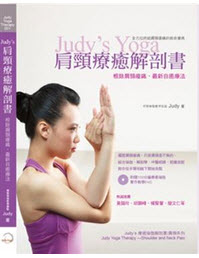好快,轉眼間,這個周六就要辦活動了,兩個月前,大夥還在把酒言歡,依依不捨地分離,沒想到,真沒想到,咱們這個周六就要見面了,真是人生一大樂事,哇!哈~哈~哈,豈不暢快,寫這麼多,就是一個字,爽!!!
好朋友相見,當然快樂,而且我們還不是鬼混打屁殺時間,我們可是在研習喲,林老師一定很欣慰,大家都如此上進可取,很好,很好.老師在~~~高雄~~也可感到欣慰了.
有些同學實在是太謙虛了,一直要我翻一下講義,害我情人節大餐差點泡湯,只保留十分鐘.還好,趕去還來得及,又吃了一頓好料.只是多了個八燭光的強力燈泡,我女兒,一直問,為什麼爸比今天要請客,為什麼要請我和媽咪,其實,你是跟班的,我才是女主角.你是前世情人,那媽咪是爸比的前世什麼人啊!!!這~~可能是你爸比的老媽吧!老公臉上三條線.
好了,不鬼扯了,現在就老老實實地翻一下文章.但我的英文也不太好,各位將就一點,而且,我也留了一個意外的禮物給各位,大家才有參與感嘛!!!
現在要報名的同學還來得及,因為我們希望這麼的活動,各位都能參與.將來那一天各位為人師表,這些知識一定用得上,再次提醒各位,
時間:8月5日(六)11:30~14:00
地點:梵瑜伽(捷運板南江子翠站四號出口即可看到,雙十路上,可看右側網站有介紹)
內容:討論膝關節,以下面文章為主
費用:500元(附議義,數量有限,晚來者可於事後至網站自行下載)
報名:請電梵瑜伽02-82534335
ps:理事長演講是12:30~13:30 11:30~12:30聯誼和溫習時間
(不附中餐,現場禁食,但附議義,數量有限,晚來者可於事後至網站自行下載)
各位猜猜看,那一張圖是正確的盤腿姿勢


答案就在下文自己看了??
Protect the Knees in Lotus and Related Postures盤腿及其相關體位之膝蓋保護
By learning basic anatomical principles, you can teach your students how to safely open their hips without injuring their knees. 透過學習基本的解剖學理論你可以指導學生如何安全地打開髖關節,而不會傷到膝蓋
By Roger Cole
Lotus Pose (Padmasana) is a supreme position for meditation, and Lotus variations of other asanas can be profound. However, forcing the legs into Lotus is one of the most dangerous things you can do in yoga. Each year, many yogis seriously injure their knees this way. Often the culprit is not the student but an overenthusiastic teacher physically pushing a student into the pose.
蓮花式(雙盤)是冥想最至高無上的姿勢,其相關體位法也是較深奧的,然而強壓小腿硬做雙盤其實是練瑜伽最危險的動作之一.每年,都有許多瑜伽研習者因此而受傷,其實罪過都不是出在學生本身,而是教學過度熱心的老師不斷地督促學生做此動作
補充:(此指學生髖關節未全開時,老師就要求學生做雙盤,其實是造成學生膝關節受傷的主因)
Fortunately, there are techniques that make Padmasana much safer to learn. Even if you don’t teach full Lotus, you can use the same techniques to protect students in related postures, such as Ardha Baddha Padmottanasana (Half-Bound Half-Lotus Forward Bend), Baddha Konasana (Bound Angle Pose), and Janu Sirsasana (Head-to-Knee Pose). These poses can do wonders for the hip joints and the muscles around them. Unfortunately, many students feel a painful pinching sensation in the inner knee in all of them. To understand why, and how to prevent it, consider the underlying anatomy.
可喜地是,現在有許多技巧可以讓學習雙盤變得更安全,即使你不教雙盤,你也可以讓學生在做相關的體位法,使用相同的技巧保護學生,例如: Ardha Baddha Padmottanasana(Half-Bound Half-Lotus Forward Bend直立單盤前彎式) Baddha Konasana (Bound Angle Pose)坐式曲膝雙腳腳掌相對,或是Janu Sirsasana (Head-to-Knee Pose)坐式單腳伸直另一腳單盤腳掌抵在另一腿之內側.這些動作對髖關節及其周圍肌肉有意想不到的好處.不幸地是,很多學生在做這些動作時,膝蓋內側會有好像被人捏痛的感覺.看一下右圖你就可以了解為何會如此,以及該如何預防
註:下圖左方是安全圖,主因在於股骨頭有外轉,看箭頭就知道,右方是未做外轉的預備動作即盤腿,看到膝關節那條藍色韌帶了嗎?由於膝與小腿的外側角度太大它被拉得太徹底,是告成膝蓋受傷的主因.
 <
<
Figure 1Safe Knee Placement Figure 2 Unsafe Knee Placement
The problem starts at the hip joint, where Lotus and its relatives require an astounding degree of mobility. When you move from a neutral, seated posture, such as Dandasana (Staff Pose), to Baddha Konasana, the ball-shaped head of the thighbone must rotate outward in the hip socket about 100 degrees. Bending the knee and placing the foot in preparation for Janu Sirsasana requires somewhat less external rotation,
徵結來自髖關節的活動力,雙盤及相關姿勢要求其要有驚人的活動角度.當你從Dandasana (坐姿上身挺直,雙腳伸直,注意此動作之髖關節角度是零)變化成Baddha Konasana(束角式=將腿打開腳掌呈翻書姿勢)時,股骨頭上方有個股頭頸會從髖關節窩外旋100度,若是做Janu Sirsasana (單腿交換伸展式=坐姿一腳伸直另一腳抵大腿內側)要求的外旋角度會比較小一點.
but as a student bends forward in the pose, the tilt of the pelvis relative to the femur brings the total rotation to about 115 degrees. Padmasana requires the same amount of external rotation (115 degrees) just sitting upright, and the angle of rotation is somewhat different, making it more challenging for many students. When we combine the Padmasana action with a forward bend, as we do in Ardha Baddha Padmottanasana, the total external rotation required at the hip joint jumps to about 145 degrees. To put this in perspective, imagine that if you could turn your thighs out 145 degrees while standing, your kneecaps and feet would end up pointing behind you!
但是,當學生上身挺身前彎時,骨盆會稍稍離地前傾,此時股骨頭的外旋角度將呈115度.Padmasana(雙盤)要求的外旋角度也是115度,但上身若坐得很正,外旋的角度還是會有點小差異,然而這對學生而言,卻是極大的挑戰.當我們以立姿前彎的動作再結合雙盤即所謂的Ardha Baddha Padmottanasana,(直立單盤前彎式)整個髖關節的外旋角度約145度,也就是說,想像一下當你成功完成這個外旋145度的直立單腳單盤前彎式時,你的膝蓋和腳將你身後結束??(救命啊!這句我不是很懂!但重點就是大腿要儘量外旋就對了)
If a student can achieve all of this outward rotation at the hip in Lotus, they can then safely lift the foot up and across onto the opposite thigh without bending the knee sideways (see Figure 1). Some people with naturally mobile hips can do this easily, but for most people, the thighbone stops rotating partway into the pose. This limitation may be due to tight muscles or tight ligaments or, in some cases, to bone-to-bone limitations deep in the hip. When the femur stops rotating, the only way to get the foot up higher is to bend the knee sideways. Knees are not designed to do this-they are only designed to flex and extend.
假如學生能輕鬆地將大腿外旋得很徹底,那她們就能安全地抬起腳放到對側大腿上完成雙盤動作,而不會彎曲到他們的膝蓋(也就是說根本沒用到膝蓋,見上圖一),有些人天生髖關節就比較靈活可以很輕易地完成,但大部分的人只能做到某種程度.這種局限性是由於大腿的肌肉或韌帶太緊所引起,或是,在某些案例,是髖關節等骨頭太硬所造成.當大腿無法外轉,只能將腳抬高地斜彎膝蓋.膝蓋的使命不是設計來做這些動作的,它的主要功能是曲膝(蹲下)或伸展.
If an overzealous student continues to pull the foot up after his thigh stops externally rotating, or if a student or teacher forces the knee downward, the thighbone and shinbone will act like long levers that apply great force to the knee. Like a pair of long-handled bolt cutters, they will pinch the inner cartilage of the knee between the inner ends of the femur and tibia. In anatomical terms, the medial meniscus will be squeezed between the medial femoral condyle and the medial tibial condyle. In layman’s terms, the inner ends of the thigh and shin will squeeze the inner cartilage of the knee (See Figure 2). With even moderate force, this action can seriously damage the meniscus. Such injuries can be very painful, debilitating, and slow to heal.
假如學生求表現也不管髖關節是否有充分外旋的能力就拚命練盤腿,或是學生或老師太雞婆地跑去強壓翹起的膝頭,大腿和小腿的動作就像是使用膝蓋為軸心的長槓桿,這將導致股頭及小腿內側部分的疼痛感.以解剖學的名詞來說,就是指膝蓋內側的半月板會被內側股骨髁以及脛骨髁所擠壓.以外行人的話來說,就是指大腿及小腿的內側將擠壓膝蓋內側的軟骨板(見上圖),即使是輕柔地施力,也會嚴重地傷害半月板,像這樣的傷害會使得你的膝蓋變得疼痛,功能衰退,最後只好求助醫療.

以上這張圖膝蓋俯視圖,左邊是外側,右邊是內側,各位可以看到medial meniscus內側半月板及外側半月板lateral meniscus
 左圖是右膝伸直,中間有髕骨patella,很多時候是patella角度跑掉,造成knee pain.右圖是彎曲,可以清楚看到patella 和股骨femur的角度.
左圖是右膝伸直,中間有髕骨patella,很多時候是patella角度跑掉,造成knee pain.右圖是彎曲,可以清楚看到patella 和股骨femur的角度.
Poses like Baddha Konasana and Janu Sirsasana can cause similar pinching. In these postures, we do not usually pull up on the foot, so the problem comes mainly from the lack of outward rotation of the thigh relative to the pelvis. Let’s first look at Baddha Konasana.
像這個Baddha Konasana(翻書動作)和Janu Sirsasana(坐姿單腿交換伸展式)也會引起同樣的疼痛感.這些動作也不太須要盤腿,因此問題出在髖關節沒有外轉.就先來看看翻書這個動作啦
Remember, to stay upright and stable while placing the feet in Baddha Konasana, the heads of the femurs will turn strongly outward-about 100 degrees-in the hip sockets. Because this requires so much flexibility of the entire hip region, many students instead allow the top rim of the pelvis to tilt backward while placing the feet in Baddha Konasana. They move the thighs and pelvis as a single unit. This requires little rotation of the heads of the femurs in the hip sockets, and it demands little flexibility. It also defeats the aim of mobilizing the hip joints and causes the entire spine to slump.
記得,翻書這個動作,上身挺直挺穩當腳掌兩兩相對,股骨頭才能有有地朝外轉100度,因為這個需要髖關節有強大的靈活度,但很多學生無法做到只好讓屁股稍往後倒才能抓到自己的雙腳.這時,骨盆和大腿已成為一體.其實,這個動作並不難,只要少許的大腿外旋角度以及少許的彈性就能成功.這個動作,也同時可以強化髖關節的靈活性並讓你的脊椎穩穩地向下挺直.
As a teacher, you may find yourself instructing the slumping student to tilt the top rim of the pelvis forward in order to bring them upright. If their hips are loose enough, this instruction won’t create a problem; the pelvis will tilt forward, the thighs will remain externally rotated, and the spine will come upright. But if the hips are too tight, the femurs and pelvis will roll forward as a single unit. While the thighbones rotate forward, the shins will not, resulting in the aforementioned pinching in the inner knees. This explains why some students do not feel any knee pain in Baddha Konasana until they attempt to tilt the pelvis completely upright.
 Ps:從現在起,你們就自己看了,真的有點難翻.但看得比較快,比手劃腳也快,就是要手打出來很慢.我不逐字翻了,下回我會寫心得,這還比較快.接下來,靠大家接力翻了.這就是禮物啦,送大家,自己挑一段,翻好自動po上來.
Ps:從現在起,你們就自己看了,真的有點難翻.但看得比較快,比手劃腳也快,就是要手打出來很慢.我不逐字翻了,下回我會寫心得,這還比較快.接下來,靠大家接力翻了.這就是禮物啦,送大家,自己挑一段,翻好自動po上來.
Some students complain of knee pain only when they bend forward in poses that require external rotation. That’s because a forward bend like Janu Sirsasana demands even more external rotation at the hip joint. Again, in the tight student, the pelvis and femur roll forward as a single unit, pinching the inner knee. Of course, in either Baddha Konasana or Janu Sirsasana, pushing the knee(s) downward makes the problem worse, because tight muscles make the femur rotate forward as it is pressed.
Now back to Lotus Pose. Forcing the knees into Padmasana by lifting up on the ankles can also injure the outside of the knee. When a student lifts the shinbone without adequately rotating the thigh, it not only closes the inner knee, it opens the outer knee, overstretching the lateral collateral ligament. If a student then forcibly turns the feet so the soles point upward (which people often do to get the feet higher up on the thighs), they can worsen the strain. This action of turning the soles actually pulls the anklebone away from the knee, creating a chain reaction all the way up to the lateral collateral ligament.
What’s the solution? First, use common sense. Never force a student into Lotus or related poses, and discourage students from forcing themselves. Teach students not to push into pain, especially knee pain. Do not adjust the pose by pulling on the foot or ankle, nor by pushing down on the knee. Instead, either teacher or student should apply firm outward rotating action to the thigh, turning the femur around its long axis, using the hands or a strap. (For full instructions on how to do this adjustment, see the sidebar.)
If your student already has knee pain but can do basic standing poses comfortably, teach these poses first, with careful alignment. This can bring her a long way toward recovery. When you reintroduce problem seated poses such as Baddha Konasana and Janu Sirsasana, use the hands or a strap to apply the same outward rotating action described above for Lotus.
For students who are ready to learn Lotus, introduce it gradually, working from poses that require less external rotation at the hip (such as sitting in Ardha Baddha Padmottanasana without bending forward) to those that require more (such as full Padmasana). Wait until last to introduce poses that require the most external rotation (forward-bending variations of full Padmasana). As students are learning these poses, teach them to rotate their thighs outward either with a hands-on adjustment or a self-adjustment. Instruct them to monitor and avoid pinching sensations in the inner knees.
Encourage your students to go slowly, be patient, and persist. In time, they may be able to sit comfortably and meditate deeply in Padmasana. If not, remind them that true meditation lies not in some specific posture but in the spirit of their practice. Help them find a posture that suits them, then guide them to settle in and experience the stillness that is yoga.
Adjustments instructions
Adjustment Instructions
It’s always a good idea to ask a student for permission before you do an adjustment. You can perform this one with or without a strap. (See Figure 1 to view strap placement.)
To begin, kneel behind and to one side of the student. To do the adjustment manually, grip the upper one-third of the thigh with both hands and turn it firmly outward. To use a strap, encircle the upper one-third of the thigh with it once or twice. Pass the free end through the buckle the first time around. When you’ve finished setting up the strap, make sure that the loose end is to the outside of the thigh, so that pulling outward on the strap will externally rotate the thigh.
Use one hand to pull firmly outward and slightly downward, being careful not to force the knee downward. Place the other hand on the back of the pelvic rim and use it to prevent the pelvis from tilting backward. While adjusting, ask the student for feedback and heed what he says. Watch his facial expression and look for signs of relief, not discomfort. When done correctly on a healthy student, the rotating action can be quite strong without causing injury.
[……]
Read more






 左圖是右膝伸直,中間有髕骨patella,很多時候是patella角度跑掉,造成knee pain.右圖是彎曲,可以清楚看到patella 和股骨femur的角度.
左圖是右膝伸直,中間有髕骨patella,很多時候是patella角度跑掉,造成knee pain.右圖是彎曲,可以清楚看到patella 和股骨femur的角度.


